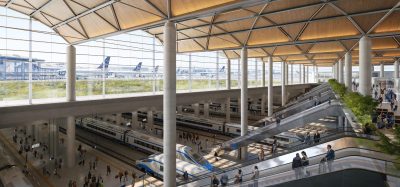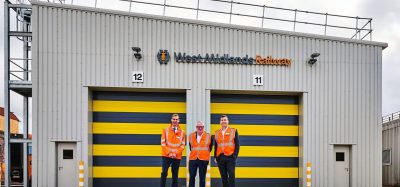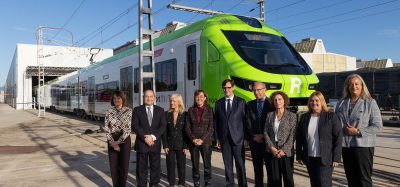Norway’s tough winter challenge and double-track progress
Posted: 31 May 2010 | | No comments yet
The past winter was unusually tough and challenging for Norwegian railways. Almost three months of continuous cold weather took their toll on ageing and well-worn infrastructure, resulting in record low punctuality and a large number of train cancellations. Never before have we experienced such poor punctuality over such a prolonged period. Rail users rightly voiced their displeasure. The media were merciless in their criticism, and intense political debate ensued.
On top of winter’s many disruptions, the run-up to Easter brought more trouble. On 24 March 2010, 16 wagons broke loose from a retarder at the Alnabru freight terminal and rolled at high speed down to Oslo harbour, where a number of them smashed into two buildings.
The past winter was unusually tough and challenging for Norwegian railways. Almost three months of continuous cold weather took their toll on ageing and well-worn infrastructure, resulting in record low punctuality and a large number of train cancellations. Never before have we experienced such poor punctuality over such a prolonged period. Rail users rightly voiced their displeasure. The media were merciless in their criticism, and intense political debate ensued. On top of winter’s many disruptions, the run-up to Easter brought more trouble. On 24 March 2010, 16 wagons broke loose from a retarder at the Alnabru freight terminal and rolled at high speed down to Oslo harbour, where a number of them smashed into two buildings.
The past winter was unusually tough and challenging for Norwegian railways. Almost three months of continuous cold weather took their toll on ageing and well-worn infrastructure, resulting in record low punctuality and a large number of train cancellations. Never before have we experienced such poor punctuality over such a prolonged period. Rail users rightly voiced their displeasure. The media were merciless in their criticism, and intense political debate ensued. On top of winter’s many disruptions, the run-up to Easter brought more trouble. On 24 March 2010, 16 wagons broke loose from a retarder at the Alnabru freight terminal and rolled at high speed down to Oslo harbour, where a number of them smashed into two buildings. Three people were killed in this tragic accident. On 29 March 2010, the GSM-R communications network suffered a major breakdown, halting almost all trains countrywide for three hours. Then, on 1 April 2010, a local service was derailed by worn track at Oslo central station.
Political debate
All of this has led to an intense public debate about the railways, the state of the network and the role of the Norwegian National Rail Administration (Jernbaneverket). The politicians have unanimously admitted that maintenance of the rail network has been neglected for decades, while Norway has been slow to build new rail infrastructure. Although the politicians have acknowledged responsibility, it is clear that rail’s reputation has suffered as a result of the past winter. The major challenge for us at Jernbaneverket is to rebuild confidence in our ability to fix the problems, so that we can provide passengers and freight customers with a high-quality transport product in future.
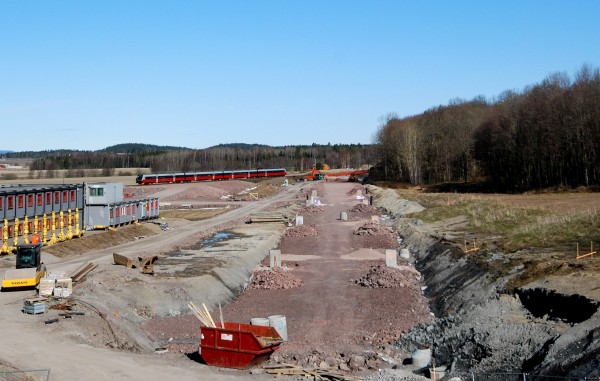

Construction between Barkåker and Tønsberg on the Vestfold line is in full progress. The section will be completed in the autumn of 2011.
Analysis
In 2006, we asked BSL Management Consultants, a German firm, to analyse the maintenance and capital expenditure requirements of the Norwegian rail network. The consultants’ report provided a cornerstone of the action plan subsequently adopted: increasing the renewal budget and drawing up long-term renewal plans. We now wish to carry out further analysis to determine whether the network is more dilapidated than we had previously assumed, despite increased maintenance in recent years. We shall also be reviewing our chosen maintenance strategy to identify any areas requiring a different approach.
No quick fixes
I have made a point of emphasising that there are no quick fixes – the backlog is large, and the job has to be done ‘one sleeper at a time’, which demands time and patience. No-one should be surprised if we continue to experience problems for a good while yet. We shall do everything we can to improve punctuality yearon- year, but the big steps forward will inevitably take time.
Plenty of good news
However, it’s not all doom-and-gloom for Norwegian railways. We are now into the first year of the Norwegian Transport Plan 2010–19, which proposes to spend NOK 92 billion on rail over the next decade: NOK 42 billion on infrastructure operations and maintenance, and NOK 50 billion in capital expenditure on new infrastructure. These figures represent an increase of almost NOK 34 billion in total rail spending compared with the previous 10-year period, and a doubling of capital expenditure.
Greater impetus
The politicians would like to see greater impetus for the double-tracking of lines in the Inter-City triangle in eastern Norway, which comprises the routes from Oslo to Lillehammer, Halden and Skien. After ambitious upgrading plans were drawn up for these lines in the early 1990s, the projects have made little headway since 2000. A few double-track sections have opened in various places. Upgrading will now be carried out more systematically, with the Tønsberg–Hamar section as the top priority.
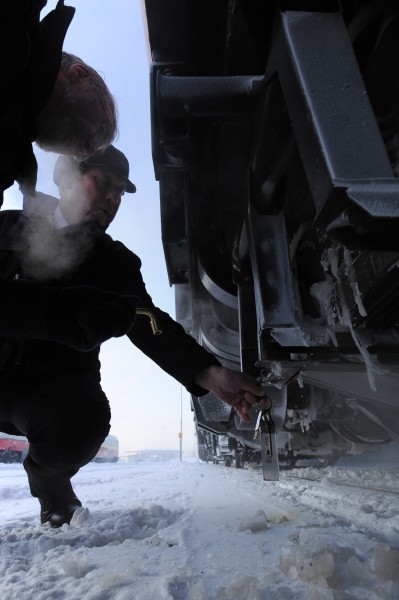

The past winter was challenging for the Norwegian railways. A cold spell of almost three months was a tough test for trains and infrastructure, causing an all-time low in punctuality and a great number of cancellations.
High-speed study
The Ministry of Transport and Communications has commissioned Jernbaneverket to study potential concepts for future high-speed rail in Norway. Our task is to produce recommendations by 1 February 2012 on the long-term strategies that should underpin the development of long-distance passenger rail services in southern Norway. The Ministry is keen to ensure effective coordination when it comes to building on the strategy for the Inter-City network, managing the long-term capacity problems in the Oslo region, and formulating strategies for passenger services on the main routes. The study covers the following routes:
- Oslo–Trondheim, Oslo–Bergen
- Oslo–Kristiansand–Stavanger
- Oslo–Gothenburg and Oslo–Stockholm
The Bergen–Haugesund–Stavanger corridor will also be studied in combination with Oslo–Bergen and Oslo–Kristiansand–Stavanger.
Lofty ambitions
The high-speed study is indicative of lofty ambitions and a proactive attitude to future rail development in Norway. Jernbaneverket intends to seize this opportunity with a passion. Nevertheless, our prime objective remains to improve punctuality and customer satisfaction right now. When it comes to setting priorities in my schedule as director general, I intend to allocate the most time to the initiatives and processes needed to achieve this objective as fast as possible. It has to be this way. If large-scale expansion of the railway system is to happen, we need to build greater confidence in rail as a mode of transport over the next few years. After several years of slow progress on double tracking in Norway, construction work is about to get under way on several major projects. Following last winter’s extensive operational problems on the railways, there has been much talk among politicians of kick-starting modernisation of the Norwegian rail network. One suggestion is to upgrade entire lines in a single project rather than section-by-section as at present.
Winning in the west
The new double-track line from Sandnes to Stavanger opened in December 2009. The 14.5km section cost NOK 2.2 billion and includes four new halts. The new line has been voted Norway’s ‘Construction Project of the Year 2009’ on account of its design and quality. Upgrading west of Oslo continues between Lysaker and Sandvika. Most of this section consists of a 5.5km tunnel, blasting of which is complete. The task now is to install rail systems before the line opens in August 2011.
Hive of activity
On the Vestfold line, the 7.8km Barkåker–Tønsberg section is currently a hive of construction activity, scheduled for completion in October 2011 at a cost of NOK 1.7 billion. This June, work will start on a 14.1km extension of double track from Holm to Nykirke. As part of this project, a new station is to be built inside the mountain at Holmestrand. The cost is put at NOK 4.3 billion. Jernbaneverket has also decided to build the planned Farriseidet–Porsgrunn line as double rather than single track as previously envisaged.
Road and rail
Planning of a new double-track line between Eidsvoll and Hamar is proceeding apace. Construction will start in 2012 with a 17km section between Minnesund and Kleverud, which is to be built at the same time as a parallel four-lane motorway. Jernbaneverket and the Public Roads Administration (Statens vegvesen) will jointly manage the construction project. Jernbaneverket is to begin preliminary works at Eidsvoll and Minnesund this year.
Largest project
The largest double-track project currently planned is a 22km line from Oslo central station to Ski, costed at over NOK 12 billion. Construction is scheduled to start in 2013, and the new line should open in 2018. Designed for speeds of up to 250km/h, the route will be in tunnel for 19km. This will be the largest onshore construction project in Norway.
About the Author
Elisabeth Enger
Elisabeth Enger has been Director General of Jernbaneverket since August 2008. Ms. Enger has vast experience of the public sector in Norway. She was an administrative officer in Akershus County Munici pality from 1980 to 1982, and then a consultant and later Chief Administrative Officer in the municipality of Skodje from 1983 to 1989. She then worked as a Director in the Norwegian Association of Local and Regional Authorities. She returned as Chief Administrative Officer in Lier from 1994 to 2001 and Bærum from 2001 to 2008. Elisabeth Enger has a bachelor’s degree in Law and Public Administration.
Stay Connected with Global Railway Review — Subscribe for Free!
Get exclusive access to the latest rail industry insights from Global Railway Review — all tailored to your interests.
✅ Expert-Led Webinars – Gain insights from global industry leaders
✅ Weekly News & Reports – Rail project updates, thought leadership, and exclusive interviews
✅ Partner Innovations – Discover cutting-edge rail technologies
✅ Print/Digital Magazine – Enjoy two in-depth issues per year, packed with expert content
Choose the updates that matter most to you. Sign up now to stay informed, inspired, and connected — all for free!
Thank you for being part of our community. Let’s keep shaping the future of rail together!
Issue
Related topics
Adverse Weather, High-Speed Rail, Infrastructure Developments, Track Construction



